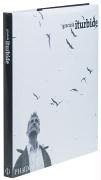Graciela Iturbide was raised in a middle-class family in Mexico City. Educated at a Catholic boarding school, Iturbide had a conservative upbringing and was married with three children before she discovered her vocation for photography in the 1970s. In 1969 she joined the National University of Mexico"s Film School and was introduced to a new cultural and political world - and to the camera through a teacher at the school, the great modern Latin American photographer, Manuel Alvarez Bravo. Iturbide"s sheltered upbringing meant that she had a limited understanding of the complexity of culture in Latin America. However, working as the assistant to Alvarez Bravo, Iturbide began to discover her homeland through photography. In 1970, Iturbide"s marriage failed, soon after the death of her six year old daughter and she began a career in photography. Her preoccupation with the religious and social rituals that surround universal human experiences in different cultures highlight the effect of this tragedy on Iturbide"s images. In representing the indigenous, traditional cultures in the Americas she worked within the tradition of Mexican ethnographic photography and her images document the importance of rite and ceremony in everyday life, the relationship between nature and culture, and the tensions between tradition, modernity and identity. Iturbide travelled during throughout the 1970s and 80s to remote villages throughout the Americas, India and Europe and her published work includes her acclaimed series of work on the Seri Indians, Los que viven en la arena ("Those Who Live in the Sand", 1981) and on Zapotec Indian culture, Juchitan de las Mujeres ("Juchitan of Women", 1989). Major exhibitions on her work include a retrospective "Images of the Spirit" held at the Philadelphia Museum of Art, Pennsylvania (1998) and a solo show at the Museum of Fine Art, Argentina (2000). Это и многое другое вы найдете в книге Graciela Iturbide (Marta Gili)
Graciela Iturbide Marta Gili
Подробная информация о книге «Graciela Iturbide Marta Gili». Сайт не предоставляет возможности читать онлайн или скачать бесплатно книгу «Graciela Iturbide Marta Gili»
